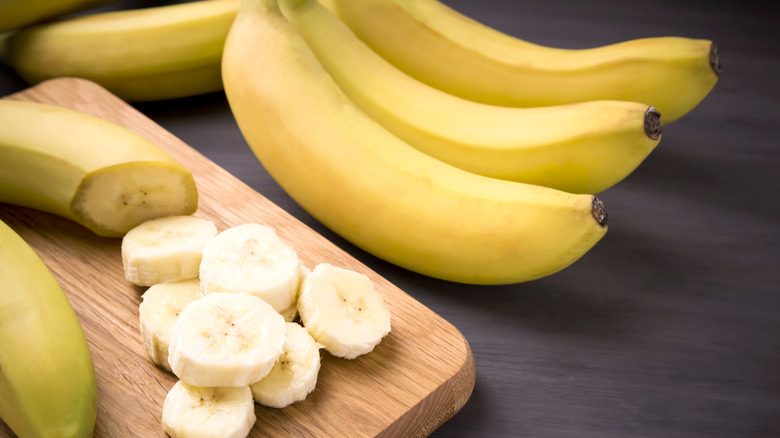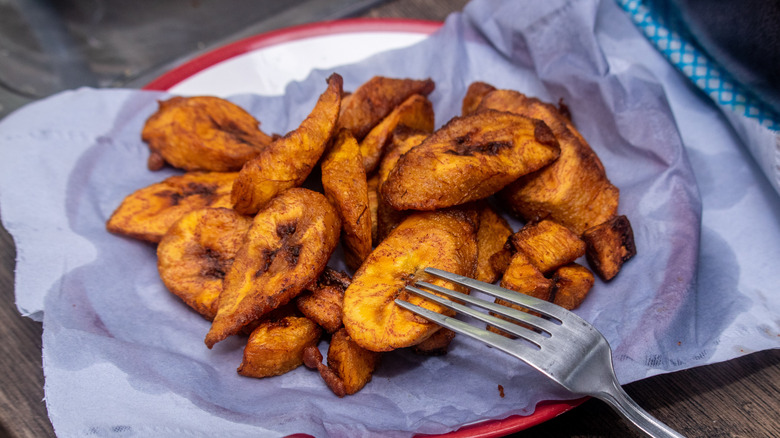The Real Difference Between Bananas And Plantains
When we think of bananas, generally, the Chiquita-style banana comes to mind — the Cavendish. But Cavendish is only one of the types of berries; yes, technically, bananas are berries, per Mcgill. While Statista confirms that Cavendish bananas are the most popular fruit in the United States, Massive Science reminds us that a pandemic still threatens them, and since they are clones, they are particularly susceptible to plague.
The threat, Tropical Race 4, entered Latin America, where most of the bananas for U.S. markets are grown (via BBC). Since there are hundreds of types of edible bananas produced worldwide, it seems logical to educate ourselves on the various options, especially if, as Massive Science suggests, the end of the Cavendish may bring more diversity to the market. If you have been to tropical locations, you may have tried some Manzano, red, or lady finger bananas; alas, they are seldom available in U. S. grocery stores.
However, you may have noticed a conspicuously larger variety in your grocery — the plantain. Perhaps you have tried plantains at a Latin American restaurant since they are prevalent in Guatemalan, Nicaraguan, Costa Rican, and El Salvadorian cuisine and are a staple worldwide in Latin, African, and Oceanian countries (per Food & Nutrition). But you may not have made the leap to try them at home, not knowing the differences and how to prepare them, as likely, you don't often cook your Cavendish bananas.
Plantains vs. bananas: what's the difference?
You have likely already noticed that plantains are bigger than Cavendish bananas, and you may know they are generally served cooked rather than raw. If you try your hand at making some, you will also find they have thicker skin, and if you taste one raw (don't worry; they're safe to eat uncooked), they're not as sweet as a Cavendish, especially if they're not fully ripe.
This may surprise you as cooked plantains are often quite sweet. Ripeness determines their fragrance, just as it does with a Cavendish. Depending on what you want to do with them, such as temper a spicy meal with a side of fried sweet plantains or serve crispy, savory tostones with ceviche, you'll want to consider their ripeness (via Cook's Illustrated).
Another difference is that plantains are higher in starch; they are served much like a potato in many cultures (via The Plantain Council). They are tasty fried, baked, boiled, steamed, and grilled. The Cavendish can't do all that! As we learn the vulnerability of monoculture, broadening our horizons in the foods we buy may help us navigate the changing agricultural climate.

